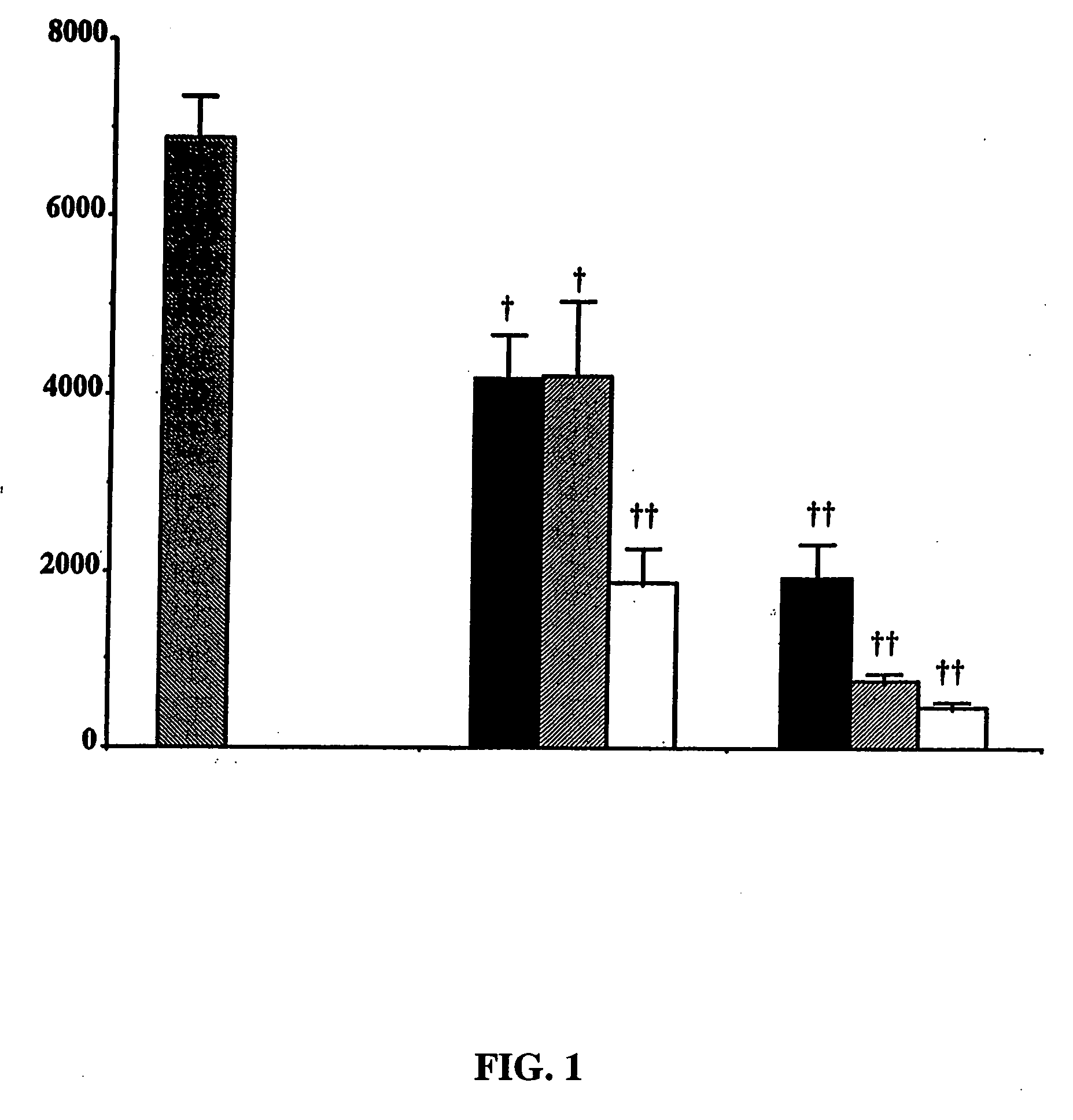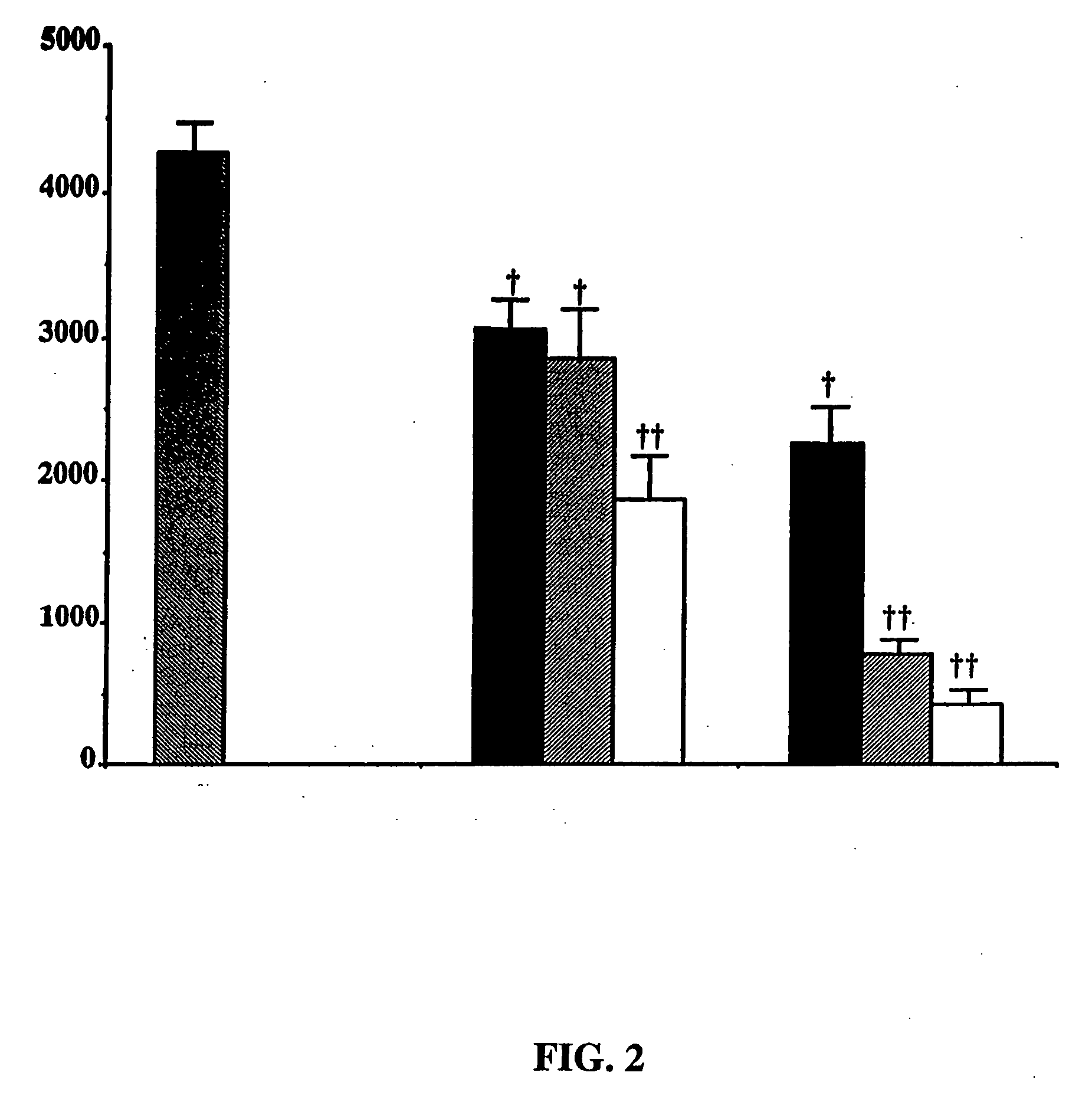Purine derivatives and methods of use thereof
a technology of purine derivatives and derivatives, applied in the field of purine derivatives, can solve problems such as brain damage or death
- Summary
- Abstract
- Description
- Claims
- Application Information
AI Technical Summary
Problems solved by technology
Method used
Image
Examples
example 1
6.1 Example 1
Synthesis of Compounds 24-31, 33, 34, 38-40, 45, 47 and 48
[0500] Step A—Synthesis of 2-N-Hydrazinoadenosine-5′-N-ethylcarboxamide: A mixture of 2-chloro-5′-N-ethylcarboxarnidoadenosine (110 mg, prepared as described in Hutchison et al., J. Med. Chem. 33:1919-1924 (1990)) in hydrazine monohydrate (2 mL) was allowed to stir at about 25° C. for about 24 hours. The reaction mixture was then concentrated and dried in vacuo. The resultant residue was suspended in MeOH (3 mL) and the solid that separated out was filtered, washed using methanol and dried in vacuo to provide 2-N-hydrazinoadenosine-5′-N-ethylcarboxamide (100 mg).
2-N-Hydrazinoadenosine-5 ′-N-ethylcarboxamide
[0501] Step B—General procedure for the synthesis of Compounds 24-31, 33, 34, 38-40, 45, 47 and 48: A solution of 2-N-hydrazinoadenosine-5′-N-ethylcarboxamide (prepared as described above) in methanol (about 0.5 to about 1.0 M solution) was treated with the corresponding aldehyde (2 to 5 eq.) and the result...
example 2
6.2 Example 2
Synthesis of Compound 42
[0502] Step A—Synthesis of 2-N-Hydrazino-N6-ethyladenosine-5′-N-ethylcarboxamide: Using the method described in Example 1, step A and substituting 2-chloro-N6-ethyladenosine-5′-N-ethylcarboxamide for 2-chloro-NECA in step A, 2-N-Hydrazino-N6-ethyladenosine-5′-N-ethylcarboxamide was prepared.
2-N-Hydrazino-N6-ethyladenosine-5′-N-ethylcarboxamide
[0503] Step B—Synthesis of Compound 42: Using the method described in Example 1, step B and substituting 2-N-Hydrazino-N6-ethyladenosine-5′-N-ethylcarboxamide for 2-N-hydrazinoadenosine-5′-N-ethylcarboxamide, Compound 42 was prepared. MS m / z 421.54 [M+H]+.
example 3
6.3 Example 3
Synthesis of (R)-3,4-dihyro-2H-pyran-2-carbaldehyde
[0504]
[0505] A mixture of (±)-3,4-dihydro-2H-pyran-2-methanol (514 g, 4.51 mol, 1 eq) and acetic anhydride (621 g, 6.09 mol, 1.35 eq) was cooled to 0° C. To the resultant mixture was added pyridine (35.6 g, 0.45 mol, 0.1 eq) and the resultant reaction mixture was allowed to warm to room temperature with stirring. The resultant reaction mixture was allowed to stir for an additional 8 hours after reaching room temperature and was shown to be complete by thin-layer chromatography (2:1 hexanes:ethyl acetate, 12 staining). The reaction mixture was concentrated in vacuo at 35° C. and the resultant residue was diluted using ethyl acetate (2 L). The resultant mixture was transferred to a separatory funnel and sequentially washed with deionized water (3×1 L), saturated aqueous NaHCO3 (2×10 L), and brine (1.0 L). The organic layer was dried over sodium sulfate and concentrated in vacuo at 35° C. to provide (±)-3,4-dihydro-2H-pyr...
PUM
| Property | Measurement | Unit |
|---|---|---|
| diameter | aaaaa | aaaaa |
| pH | aaaaa | aaaaa |
| concentration | aaaaa | aaaaa |
Abstract
Description
Claims
Application Information
 Login to View More
Login to View More - R&D
- Intellectual Property
- Life Sciences
- Materials
- Tech Scout
- Unparalleled Data Quality
- Higher Quality Content
- 60% Fewer Hallucinations
Browse by: Latest US Patents, China's latest patents, Technical Efficacy Thesaurus, Application Domain, Technology Topic, Popular Technical Reports.
© 2025 PatSnap. All rights reserved.Legal|Privacy policy|Modern Slavery Act Transparency Statement|Sitemap|About US| Contact US: help@patsnap.com



